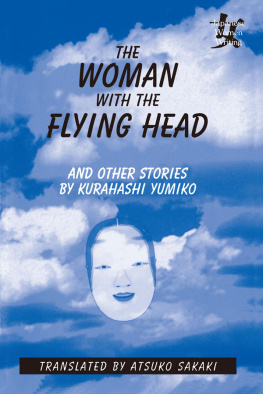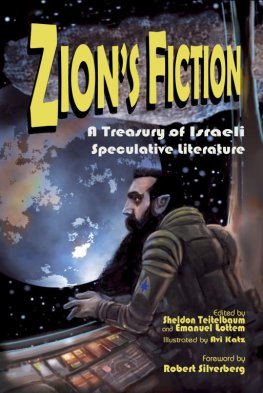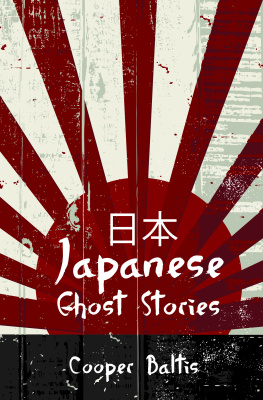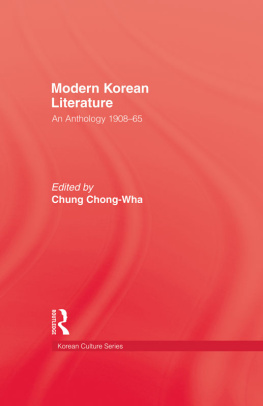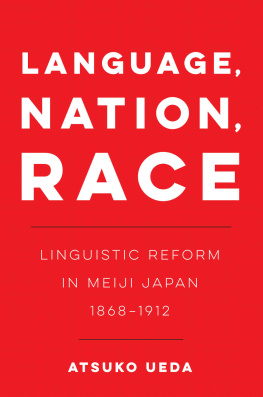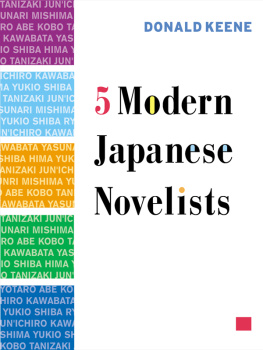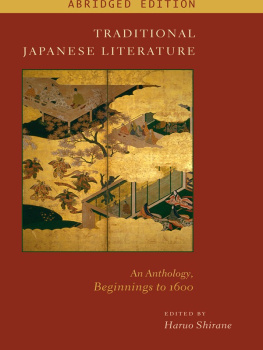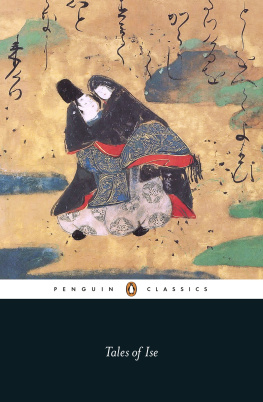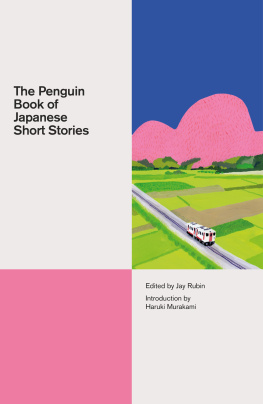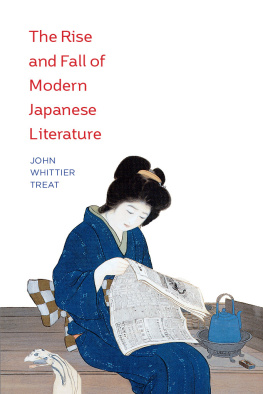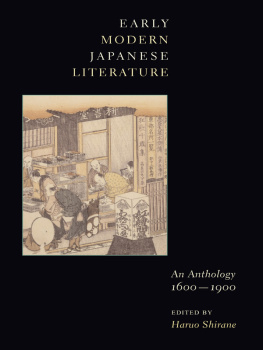THE
WOMAN
WITH THE
FLYING HEAD
AND OTHER STORIES
BY KURAHASHI YUMIKO

A series edited by
Michiko Niikuni Wilson
Japanese Women Writing, devoted to works by and about Japanese literary women, celebrates the resurgence of womens writings in a country that gave women a voice and a room of their own as early as A.D. 900. Despite a long hiatus in the female literary tradition between 1190 and 1868, and another during the Pacific War, Japanese female writers have been able to reclaim what is their due. Introducing a wide range of writing since the early 1900sfiction, poetry, critical essays, and biographiesJapanese Women Writing attempts to redefine the modern Japanese literary canon and highlight a female perspective that intersects with the notions of gender, power, and sexuality

An East Gate Book
First published 1998 by M.E. Sharpe
Published 2015 by Routledge
2 Park Square, Milton Park, Abingdon, Oxon OX14 4RN
711 Third Avenue, New York, NY 10017, USA
Routledge is an imprint of the Taylor & Francis Group, an informa business
Copyright 1998 Taylor & Francis. All rights reserved.
No part of this book may be reprinted or reproduced or utilised in any form or by any electronic, mechanical, or other means, now known or hereafter invented, including photocopying and recording, or in any information storage or retrieval system, without permission in writing from the publishers.
Notices No responsibility is assumed by the publisher for any injury and/or damage to persons or property as a matter of products liability, negligence or otherwise, or from any use of operation of any methods, products, instructions or ideas contained in the material herein.
Practitioners and researchers must always rely on their own experience and knowledge in evaluating and using any information, methods, compounds, or experiments described herein. In using such information or methods they should be mindful of their own safety and the safety of others, including parties for whom they have a professional responsibility.
Product or corporate names may be trademarks or registered trademarks, and are used only for identification and explanation without intent to infringe.
Uchujin 1964/Koibito doshi 1963/Kuroneko no ie 1989/Kubi no tobu onna 1985/Kokan 1985/Kijo no men 1985/Haru no yo no yume 1989/Yume no kayoiji 1988/Erabareta basho 1988/Furawa abusutorakushon 1991/Nagai Yumeji 1968 all by Yumiko KURAHASHI
English translation arranged with Yumiko Kurahashi
through Japan Foreign-Rights Centre
Library of Congress Cataloging-in-Publication Data
Kurahashi, Yukimo, 1935
The woman with the flying head and other stories / by Kurahashi Yumiko; translated by Atsuko Sakaki
p. cm.(Japanese women writing)
Contents: An extraterrestrialWe are loversThe house of the black catThe woman with the flying headThe tradeThe witch maskSpring night dreamsThe passage of dreamsA special placeFlower abstractionThe long passage of dreams
ISBN 0-7656-0157-5 (cloth : alk. paper). ISBN 0-7656-0158-3 (paper : alk. paper)
1. Kurahashi, Yukimo,1935Translations into English.
I. Sakaki, Atsuko, 1963. II. Title. III. Series.
PL855.U6A26 1997
895.635dc21 97-19074
CIP
ISBN 13: 9780765601582 (pbk)
ISBN 13: 9780765601575 (hbk)
For Him Inside Me
Contents
___________________
___________________
M y journey toward this anthology had its origin in the Ph.D. dissertation which I submitted to the University of British Columbia in July 1992, entitled The Intertextual Novel and the Interrelational Self: Kurahashi Yumiko, a Japanese Postmodernist. Though the dissertation includes no complete translation of any of Kurahashis stories, I discuss them in the introduction, and deals in part with the last story in this volume, The Long Passage of Dreams. My primary advisor, Kinya Tsuruta, commented then that he found my thesis more interesting to read than Kurahashis stories, an impression I hopewith due gratitude for his tolerance and support of my scholarly workto challenge with this volume.
Thanks to the understanding shown by my senior colleagues in the Japanese literature program at Harvard, Jay Rubin and Edwin Cranston, and then chairs of the department Stephen Owen and Harold Bolitho, I was able to teach Nagai yumeji [The Long Passage of Dreams] in the spring of 1993 and the fall of 1995 in a course for close reading called Japanese Literature 108. It is with delight and pleasant memories that I mention the names of the students enrolled in the course, to whom I owe a great deal: Lena Akai, Peter Carolan, Charo DEtcheverry, David Greenspan, Sean Hennessey, Yoko Kiser, Sergio Reyes, Nathan Scales, and Joan Siegel. They will see reincarnations of their translation assignments in the current version of The Long Passage of Dreams. I am of course responsible for any errors or problems that might remain. The enthusiasm shown by the majority of the students convinced me that Kurahashis fiction could indeed provoke and engage a wide range of readers.
I would never have planned to publish my translations, however, if it had not been for the encouragement of Stephen Owen, who responded enthusiastically to draft translations of some of the stories based on Chinese literary sources and gave generously of his time, offering support as well as stylistic suggestions. I cannot thank him enough for his kindness. It was most fortunate that I was able to count on the editorial help of Robert Ashmore, who proofread the manuscript and gave thorough and thoughtful suggestions for further polishing. Without his help, this volume would never have been possible.
I would like to also thank the following institutions and organizations, which have given me opportunities to present my ideas on Kurahashi Yumiko and alerted me to the existence of many potential readers: the Department of Asian Studies, University of British Columbia (1992, 1995); the Department of East Asian Languages and Civilizations, Harvard University (1993); the Department of East Asian Languages and Center for Japanese Studies, University of California, Berkeley (1993); the Department of East Asian Studies, University of Toronto (1994); the International Comparative Literature Association (1994); the Edwin O. Reischauer Institute for Japanese Studies (1996); and the Association for Asian Studies Pacific Coast Regional Conference (1996). I am particularly thrilled by the positive response with constructive comments of Sharalyn Orbaugh, Kenneth L. Richard, and Howard Hibbett. I am also thankful to Rebecca Copeland, Esperanza Ramirez-Christensen, Philip Gabriel, and Stephen Snyder who, having extensively commented on my papers on Kurahashi, implicitly or explicitly showed strong interest in Kurahashis fiction.
I am especially grateful for Michiko Niikuni Wilson, who, as editor of the series Japanese Women Writing, read the manuscript, made helpful suggestions, and gave her support to the project. I am also indebted to Douglas Merwin for sharing my enthusiasm for the stories, and for offering his editorial expertise. Mai Shaikhanuar-Cota and Angela Piliouras have been very kind as, step after step, I approached the completion of the project. On the Japan side, Kurita Akiko of the Japan Foreign-Rights Centre responded immediately and positively to my primary contact, which relieved me of any psychological obstacle I faced as a novice in the business of translation. I was most astonished and excited by a phone call from Kurahashi Yumiko herself, who compared my papers on her to surgical operations which revealed the anatomy of my body and which made me feel as if cool winds had blown through my body and showed support and enthusiasm for this project. It was a metafictional moment, in which author and reader encountered each other in reality!
Next page
